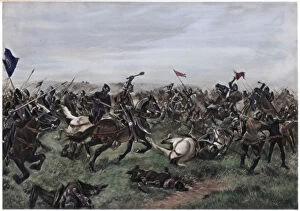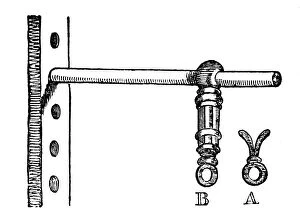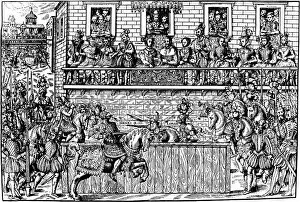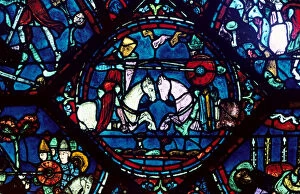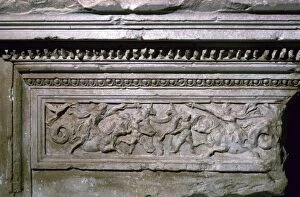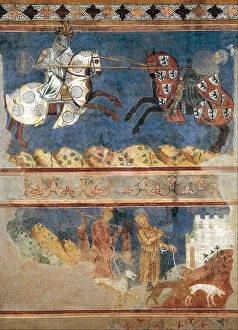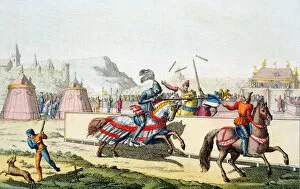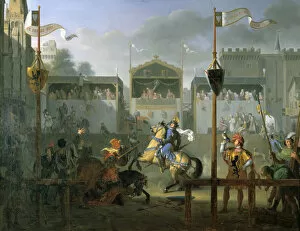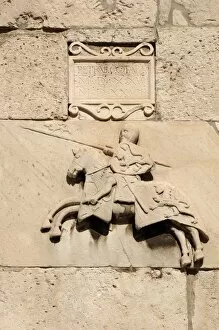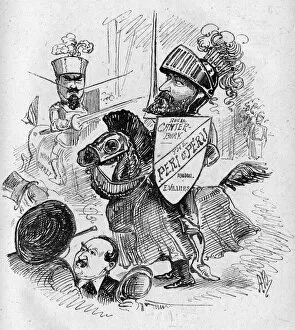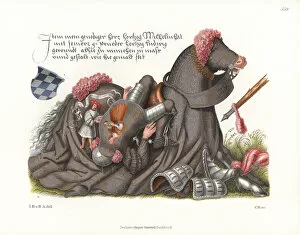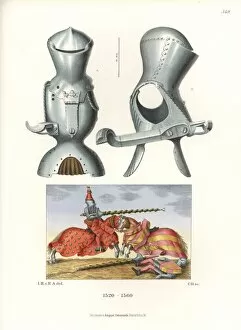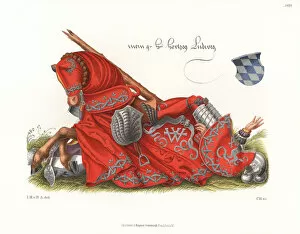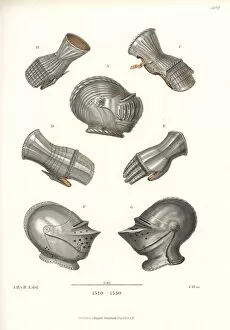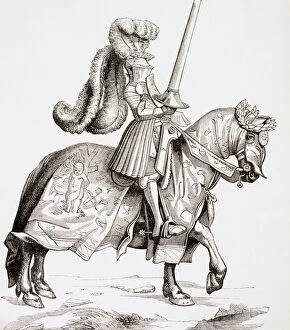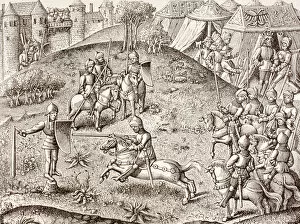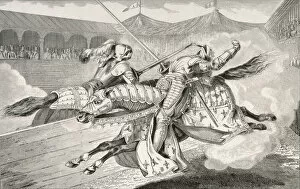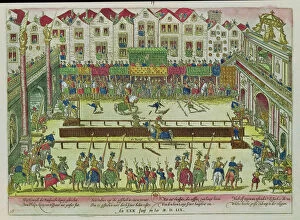Joust Collection (#10)
Step into the world of chivalry and valor with jousting, a timeless spectacle that captivated medieval audiences
For sale as Licensed Images
Choose your image, Select your licence and Download the media
Step into the world of chivalry and valor with jousting, a timeless spectacle that captivated medieval audiences. In this enchanting scene from Faerie Queene by Walter Crane, we are transported to an era where knights donned shining armor and mounted their noble steeds for epic tournaments. Jousting, famously depicted in Chaucer's Knight's Tale, was a popular sport among nobles during the Middle Ages. The image of Henry I, Count of Anhalt from the Codex Manesse reveals the grandeur and elegance associated with these events. Medieval tournaments were divided into two sides, as seen in this captivating illustration by Master of the Harley Froissart. The Jousts of St Inglevert showcases skilled knights competing fiercely for honor and glory. However, not all tournaments went according to plan. Richard II himself had to intervene when things got out of hand during one such event. This unexpected twist adds an element of excitement and unpredictability to the already thrilling joust. The jousts weren't limited to just open fields; they even took place on iconic landmarks like London Bridge. Imagine witnessing armored riders charging towards each other while crossing this historic bridge - a truly breathtaking sight. To engage in combat during these contests required skillful use of medieval weapons such as lances and swords. These formidable tools were wielded by brave knights who risked life and limb for victory. Intriguingly captured within the pages of Book of the Tournament is a knight on horseback armed with his trusty lance ready for battle. This beautifully illustrated manuscript serves as a testament to how deeply ingrained jousting was in medieval culture. Finally, we witness two riders engaged in fierce combat through an intricate woodcut from 1517-18. Their determination is palpable as they clash amidst cheers from eager spectators. Jousting remains an enduring symbol of courage, honor, and the spirit of medieval times.


